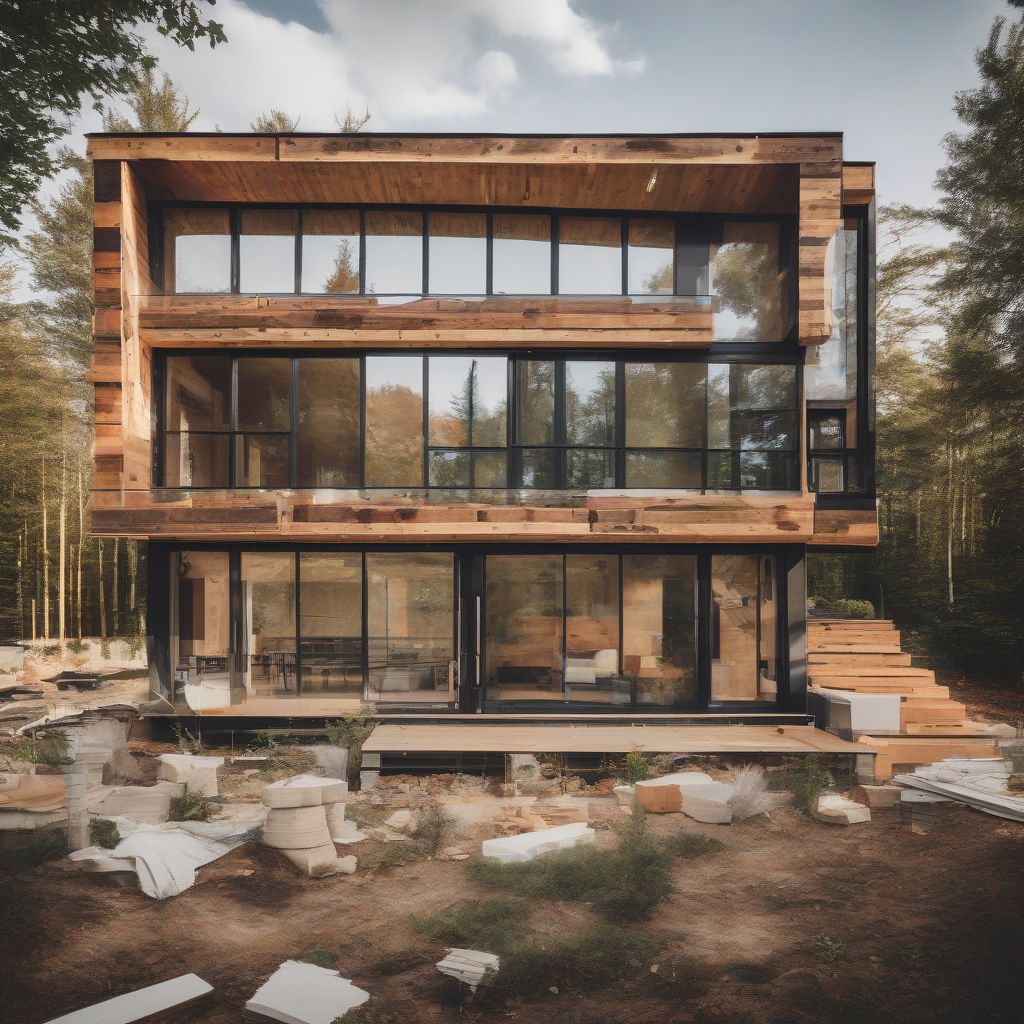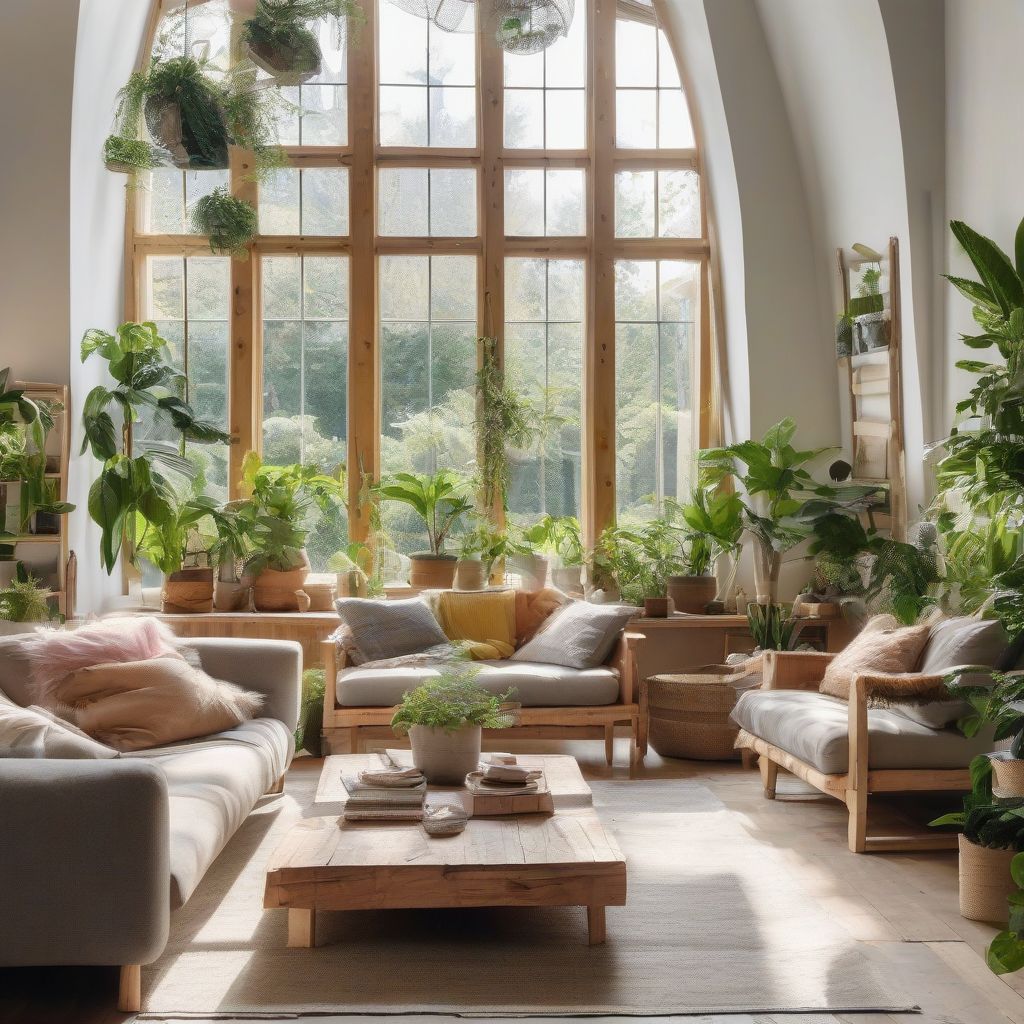Imagine stepping into your dream home, a haven that’s not only beautiful but also kind to the planet. Building an eco-friendly home is about more than just hopping on a trend – it’s about making conscious choices that lessen your environmental footprint while creating a healthier, happier living space for you and your family.
Whether you’re just starting to plan your dream house or considering making your current home more sustainable, this guide will walk you through key steps and considerations for building an eco-friendly home that’s both stylish and sustainable.
Planning Your Eco-Friendly Home: Laying the Foundation for Sustainability
Before hammering the first nail, thoughtful planning is key to creating a truly eco-friendly home. Here are the essential elements to consider:
1. Choosing the Perfect Location: Let Nature Be Your Guide
When selecting a location for your sustainable home, consider these factors:
- Proximity to Amenities: Opting for a location near shops, schools, and workplaces can significantly reduce your reliance on cars, promoting a greener lifestyle.
- Public Transportation Access: Being close to reliable public transport options makes it easier to minimize car usage and lessen your carbon footprint.
- Sun Orientation: Understanding the path of the sun across your lot allows you to design your home to maximize natural light and passive heating and cooling.
2. Partnering Up for Sustainability: Selecting the Right Team
Building an eco-friendly home is a collaborative journey. Partner with professionals who share your vision:
- Sustainable Architects and Designers: Seek out professionals specializing in eco-friendly design. They can guide you in choosing sustainable materials and implementing energy-efficient strategies.
- Experienced Green Builders: Look for builders with a proven track record in sustainable construction practices. Their expertise ensures your home is built to the highest environmental standards.
Building Green: Eco-Friendly Materials and Construction Techniques
Building an eco-friendly home involves making responsible choices regarding building materials and construction methods.
1. Eco-Friendly Building Materials: The Building Blocks of Sustainability
Selecting eco-friendly building materials is vital in reducing your home’s environmental impact:
- Sustainable Wood: Opt for wood certified by the Forest Stewardship Council (FSC), ensuring responsible forestry practices.
- Recycled and Reclaimed Materials: Give materials a second life by incorporating reclaimed wood, recycled glass countertops, or repurposed metal accents.
- Low-VOC and Non-Toxic Finishes: Choose paints, sealants, and adhesives with low or zero volatile organic compounds (VOCs) to improve indoor air quality.
2. Energy-Efficient Construction Methods: Building for a Sustainable Future
Implementing energy-efficient construction techniques can significantly reduce your home’s energy consumption and lower your carbon footprint:
- High-Performance Insulation: Proper insulation is like wrapping your home in a cozy blanket, keeping it warm in the winter and cool in the summer. It reduces the need for excessive heating and cooling, saving energy and money.
- High-Performance Windows: Opt for energy-efficient windows with double or triple glazing and low-E coatings. These windows minimize heat gain in the summer and heat loss in the winter, ensuring a comfortable indoor temperature year-round.
- Air Sealing: Proper air sealing eliminates drafts and air leaks, further enhancing insulation effectiveness and optimizing energy efficiency.
 Eco-Friendly Home Construction
Eco-Friendly Home Construction
Energy and Water Efficiency: Sustainable Living, Inside and Out
Creating an eco-friendly home extends beyond the building materials and encompasses energy and water conservation strategies.
1. Renewable Energy Sources: Harnessing the Power of Nature
Integrating renewable energy sources can significantly reduce your home’s reliance on traditional fossil fuels, promoting a greener lifestyle:
- Solar Panels: Installing solar panels allows you to generate your own clean electricity, reducing your carbon footprint and potentially saving on energy bills.
- Geothermal Heat Pumps: These systems utilize the Earth’s natural heat to provide energy-efficient heating and cooling for your home.
- Wind Turbines: If your location is suitable, small wind turbines can generate electricity, further reducing your reliance on the grid.
2. Water Conservation: Saving Our Most Precious Resource
Implementing water conservation strategies is not only environmentally responsible but can also lead to significant cost savings:
- Low-Flow Fixtures: Installing low-flow showerheads, faucets, and toilets can drastically reduce water usage without compromising performance.
- Water-Efficient Appliances: Choosing appliances with high energy and water efficiency ratings minimizes both your environmental impact and utility bills.
- Rainwater Harvesting: Collecting rainwater in barrels can provide a sustainable water source for irrigation, reducing your reliance on municipal water supplies.
Sustainable Living: Creating an Eco-Conscious Interior
An eco-friendly home goes beyond the structural elements; it’s about embracing a sustainable lifestyle within its walls.
1. Energy-Efficient Appliances: Smart Choices for a Greener Home
Choosing energy-efficient appliances is not only good for the planet but also your wallet:
- Energy Star Certified Appliances: Look for the Energy Star label when purchasing appliances. This certification indicates that the appliance meets strict energy efficiency guidelines.
- Smart Home Technology: Integrating smart thermostats, lighting controls, and energy monitoring systems can optimize energy usage and minimize waste.
2. Sustainable Interior Design: Style and Sustainability in Harmony
Sustainable interior design principles can create a healthy, stylish, and eco-friendly living space:
- Natural and Sustainable Materials: Incorporate materials like bamboo flooring, organic cotton fabrics, and reclaimed wood furniture for a natural and eco-friendly touch.
- Eco-Friendly Paints and Finishes: Opt for low-VOC or natural paints and finishes to improve indoor air quality and create a healthier living environment.
 Sustainable Interior Design
Sustainable Interior Design
Maintaining Your Sustainable Haven: Long-Term Eco-Friendly Practices
Building an eco-friendly home is a remarkable achievement, but maintaining its sustainability requires ongoing commitment and mindful practices.
1. Regular Maintenance: A Stitch in Time Saves Energy (and the Planet!)
Regular maintenance is essential to ensure the longevity and efficiency of your eco-friendly home’s systems:
- HVAC System Maintenance: Schedule annual checkups for your heating, ventilation, and air conditioning system to keep it running efficiently and identify potential issues early on.
- Sustainable Landscaping: Choose native plants that require less water and maintenance, reducing your home’s environmental impact and supporting local biodiversity.
2. Conscious Consumption: Making Mindful Choices Every Day
Your lifestyle choices can significantly impact your home’s overall sustainability. Embrace mindful consumption habits:
- Reduce, Reuse, Recycle: Continue to practice the three R’s to minimize waste and conserve resources.
- Support Local and Sustainable Businesses: Choose products from companies committed to ethical and sustainable practices.
Conclusion: Building a Legacy of Sustainability
Building an eco-friendly home is an investment in the future – for you, your family, and the planet. By incorporating sustainable practices into every aspect of your home’s design, construction, and operation, you can significantly reduce your environmental impact, create a healthier living space, and inspire others to adopt a greener lifestyle. Let your home be a testament to the power of sustainable living, where comfort and environmental consciousness coexist in perfect harmony.
Ready to start making a difference? Explore our articles on how renewable energy is powering smart cities and how sustainable technology is reducing carbon footprints for more inspiration on your journey towards a greener future.
[amazon bestseller=”sustainable living”]
